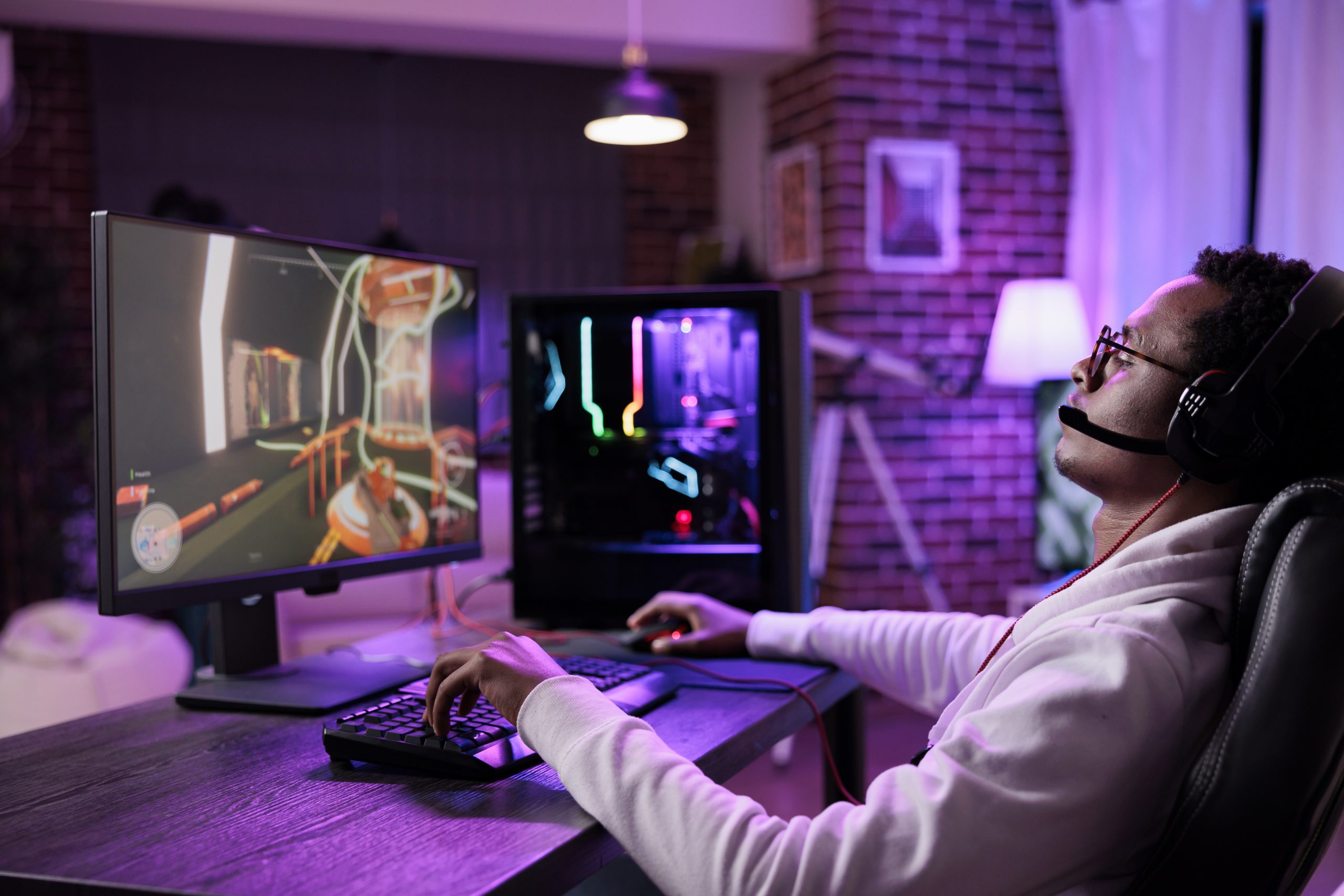Let's Discuss
Enquire NowIn recent years, gaming has become an increasingly popular form of entertainment. It has become a major industry, with video games generating billions of dollars in revenue each year. What’s new for this sector is that developers now employ advanced 3D graphics to produce more realistic and engaging games. So how do they do it?
Let’s see a brief overview.

3D graphics have become a crucial aspect of revolutionizing the gaming industry. The technology behind 3D graphics involves the use of mathematical algorithms to create and render three-dimensional objects on a two-dimensional screen. The first step in creating 3D graphics for a game is the modeling process, where the game developer creates a virtual representation of the objects and characters that will be used in the game. This is done using specialized software such as Maya or Blender, which allow the developer to create and manipulate the geometry, textures, and materials of the objects.
Once the models have been created, the next step is to apply lighting and shading to them. This is done to make the objects look more realistic and to give them a sense of depth and dimensionality. The lighting and shading can be done using a variety of techniques, such as ray tracing and rasterization. Ray tracing is a method that simulates the way light behaves in the real world, while rasterization is a more efficient method that uses a grid of pixels to approximate the lighting and shading.
Next, the developer will animate the characters and objects in the game. This is done using keyframe animation, which involves creating a series of keyframes that define the positions and actions of the characters and objects at specific points in time. The animation software then interpolates the positions and actions of the characters and objects between the keyframes to create a smooth and realistic animation. Once the models, lighting, shading, and animation are complete, the developer will integrate them into the game engine. A game engine is a software framework that provides the tools and functionality needed to create a game, such as physics, collision detection, and rendering. Unity and Unreal Engine are popular game engines.
Finally, the developer will have to test and optimize the game to ensure that it runs smoothly and effectively on a wide range of devices and hardware configurations. This may involve adjusting the resolution, textures, and other graphical settings to ensure that the game looks good and runs well on a wide range of devices.
Challenges
Using 3D graphics in game development can present a number of challenges. One major problem is the complexity of 3D compared to 2D environments. This makes it more difficult to create visually pleasing and believable worlds. Additionally, creating realistic characters and animations in 3D is an intricate and time-consuming task. Another challenge is the increased hardware requirements for 3D games, making it difficult to ensure that the game will run smoothly on a variety of devices. Furthermore, 3D graphics also require more memory and storage space which can be a limitation for mobile and low-end devices. Finally, designing a strong camera system and player control system for 3D games is complicated because it can significantly affect the user’s immersion and experience.
Alternate uses of 3D graphics
3D graphics are used in many industries and have a wide range of applications. In the entertainment industry, they are also used in animated films and special effects for live-action movies. In the architectural and interior design industry, they are used to create detailed visualizations and virtual walkthroughs of buildings and spaces. In the medical field, they are used for surgical planning and simulations, as well as for creating visual aids for patient education. In the manufacturing industry, they are used for product design and prototyping, and in the automotive industry, they are used for vehicle design and crash-testing simulations. 3D graphics are also used in virtual and augmented reality, which in turn aids fields such as education, training, and therapy.
Conclusion
In conclusion, 3D graphics are an essential aspect transforming the gaming sector as it allows more freedom of movement and camera angles, as well as the ability to create multiple game genres like first-person shooters, racing games, and open-world games making the gaming industry more diverse. Since 3D graphics require robust hardware to function, more sophisticated and modern gaming consoles and personal computers have been created.
Have a project in mind that requires complex tech stacks? At Dexlock, we keep ourselves on track with the latest updates from the tech world. We make it a point to educate ourselves with the upcoming technologies to provide the best service possible to our clients. Connect with us here for more.
Disclaimer: The opinions expressed in this article are those of the author(s) and do not necessarily reflect the positions of Dexlock.



